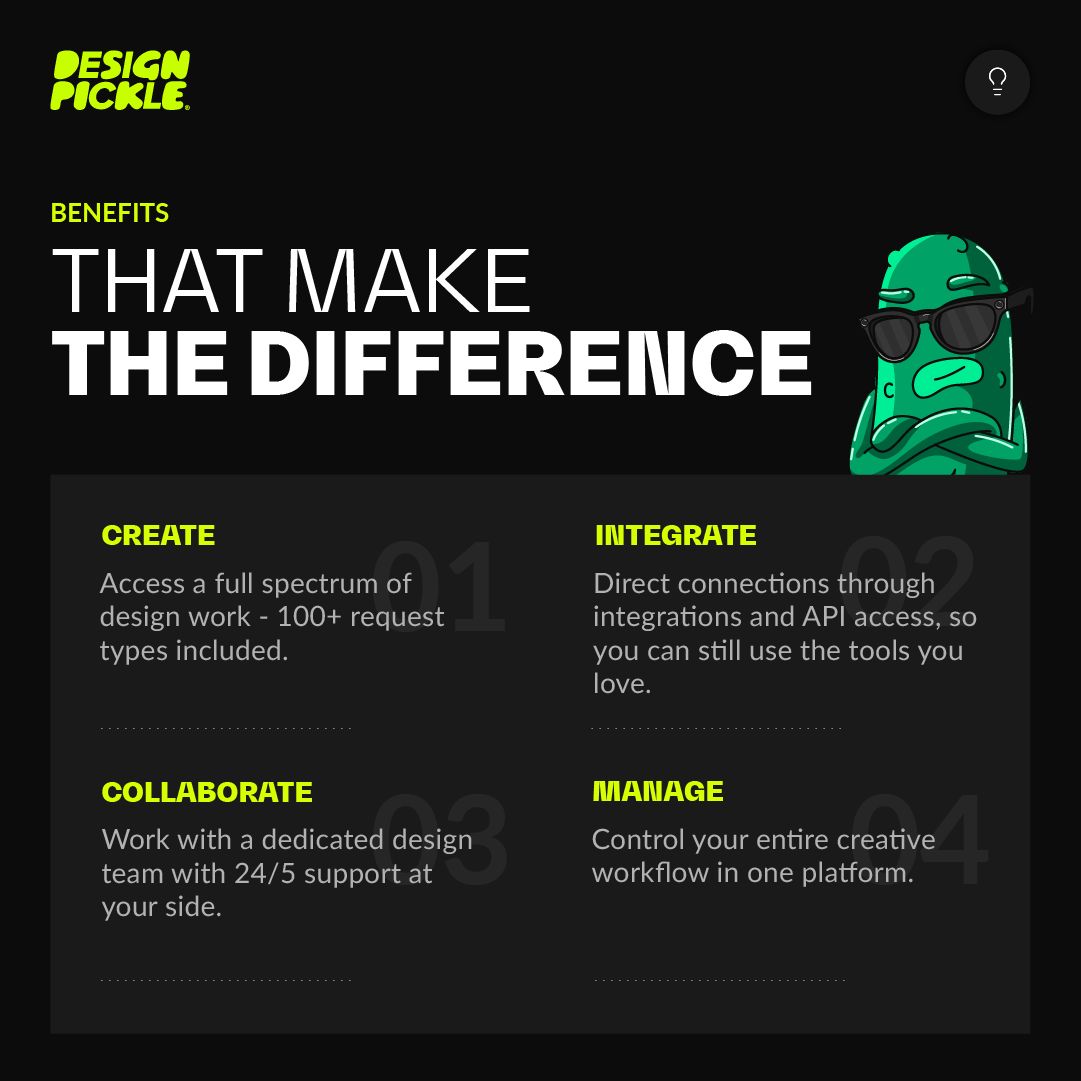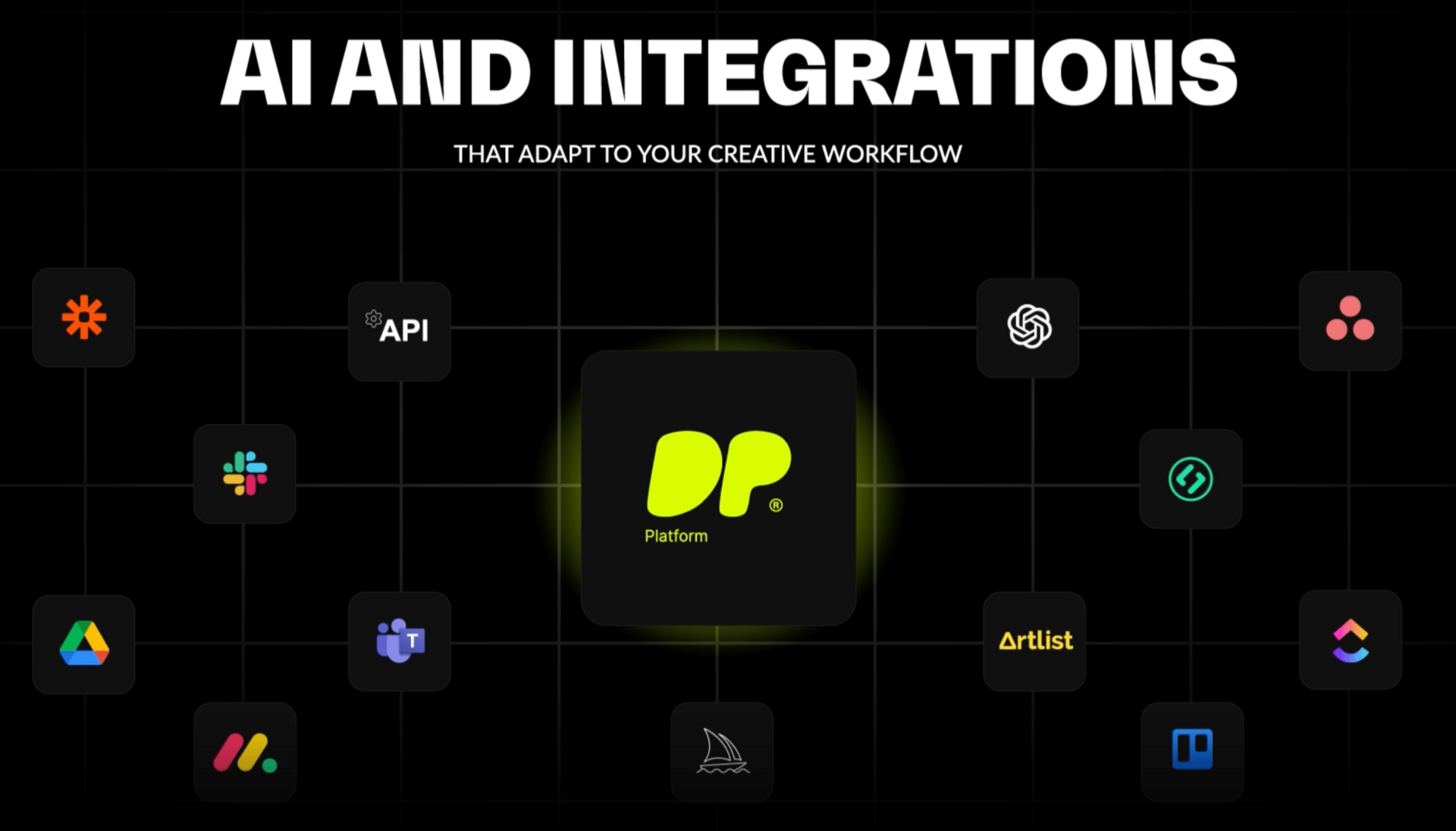- Latestly AI
- Posts
- Design Ops Made Simple - Why Design Pickle Is Becoming Every Team’s Creative Backbone
Design Ops Made Simple - Why Design Pickle Is Becoming Every Team’s Creative Backbone
Beyond Design on Demand
The future of design isn’t about outsourcing tasks; it’s about engineering creative systems.
Design Pickle has become the go‑to infrastructure for teams that need clarity, speed, and control across dozens of visual deliverables .
It merges people, process, and platform into one working rhythm.
No freelancers to chase. No inbox chaos. No pricing guesswork. Just a scalable framework that grows alongside your marketing output.

The Design Ops Gap
Most companies today have the right strategy but the wrong creative systems.
Spreadsheets, agencies, and ad‑hoc freelancers do the job — but they don’t scale. Work becomes scattered, turnaround times unpredictable, and quality inconsistent.
Design Pickle solves this by acting as the operating system for creative work :
CREATE: Brief new ideas through structured forms and AI‑assisted prompts.
INTEGRATE: Connect the platform directly to Slack, Asana, ClickUp, or Stockpress.
MANAGE: View timelines, workloads, and output metrics from one centralized dashboard.
COLLABORATE: Comment in real time, share feedback, and finalize versions without leaving the interface.
It’s a design engine — not just a talent pool .

Inside a Seamless Workflow
Here’s how a single request flows through Design Pickle’s platform:
Submit your concept or upload references.
The system structures the brief with needed specs (size, format, tone, platform).
A designer familiar with your brand executes the task.
QA teams verify that the result meets brand guidelines.
Final files auto‑sync to your main asset library (Figma, Canva, Google Slides).
That’s five steps, one login, zero hiccups .
Why Teams Stick with It
The average customer stays with Design Pickle for over 18 months — an exceptional retention curve for a creative service .
What anchors them isn’t price; it’s predictability and design governance.
Predictable Capacity: Work doesn’t slow during campaign surges; capacity flexes up automatically.
On‑Brand Quality: Vetted global designers retain brand memory across cycles.
Fast Feedback: 24 / 5 support and white‑label options mean reviewers, clients, or stakeholders stay looped in .
Whether you run an internal creative team or handle multiple client accounts, this structure means never starting from zero.
Creative Ops for Every Size
Design Pickle lets users match their subscription level to real production demand — a key reason it fits startups and enterprises alike :
Company Stage | Typical Use Case | Plan Fit |
|---|---|---|
Startup / Founder‑led Marketing | Everyday social design + landing assets | Base Platform |
Growth Stage Agency | Multi‑brand campaign production, reporting | Pro Platform |
Enterprise Marketing Ops | Cross‑team design requests + creative data governance | Pro with Integrations |
Add‑ons such as art direction or production coordination give high‑touch creative oversight for brands needing stricter standards .
What Creative Teams Say
“It felt like switching from email chaos to actual creative order.”
“Our average cycle time dropped by 60 percent after moving to Design Pickle.”
“Finally, we can manage 10 campaigns a week without burning anyone out.”
These client comments echo a consistent pattern: predictable workflow leads to measurable growth .
Integrations That Keep Everything Talking
Design Pickle slots into existing SaaS infrastructure seamlessly :
Slack & Microsoft Teams: instant notifications and task updates.
Asana / ClickUp: design tickets integrate directly into sprint boards.
Zapier & Stockpress: automated delivery pipelines for faster asset reuse.
The platform isn’t designed to replace your tools — it makes them collectively smarter.

In Plain Words
Design Pickle is not only a subscription design service; it’s your creative control center.
It brings the same logic cloud computing brought to development — elasticity, transparency, and shared success .
For brands that feel their design process is “busy but blind,” this is the reset button: measurable output, unified systems, and creativity that moves at business speed.